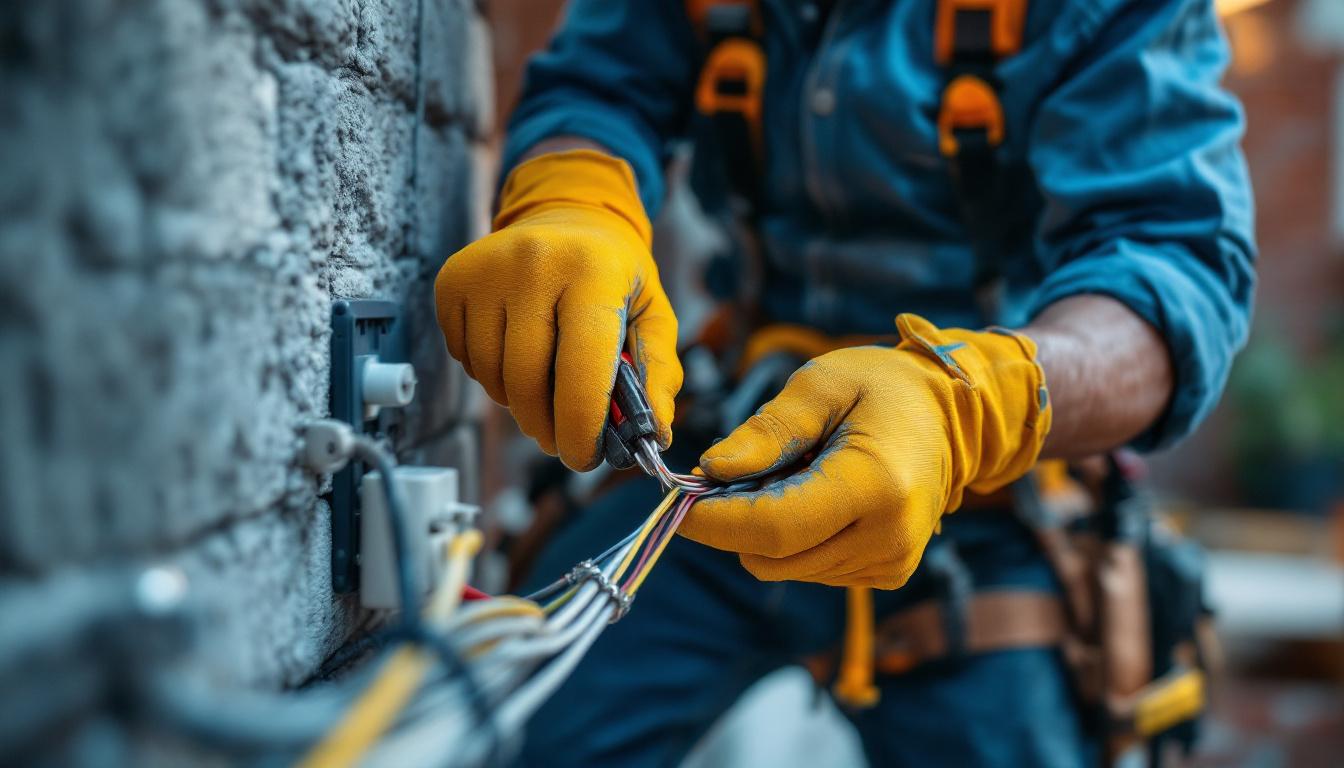
In the world of electrical installation, wire pulling is a fundamental task that often goes unnoticed until something goes wrong. Lighting contractors, who are responsible for creating the ambiance and functionality of spaces through effective lighting solutions, must pay close attention to the nuances of this process. While the technical aspects of wire pulling might seem straightforward, there are several key considerations that can significantly impact the efficiency and safety of an installation. This article explores common oversights in wire pulling that lighting contractors should be aware of to ensure a successful project.
Before any wire is pulled, a comprehensive understanding of the layout is essential. This includes not only the physical dimensions of the space but also the intended lighting design. A well-thought-out plan will help determine the correct wire lengths, types, and routes needed for the installation. Failing to consider the layout can lead to wasted materials and time, as well as potential safety hazards.
Moreover, contractors should take into account the location of existing structures, walls, and fixtures. This awareness can prevent complications during the pulling process, such as encountering unexpected obstacles that could delay progress. A detailed plan will also facilitate better communication with other trades involved in the project, ensuring everyone is on the same page. In addition, it is beneficial to create a visual representation of the layout, such as a detailed schematic or blueprint, which can serve as a reference throughout the installation process. This visual aid not only helps in identifying potential issues early on but also aids in training new team members who may be less familiar with the project specifics.
Another often-overlooked aspect of wire pulling is the selection of the appropriate wire type for the specific application. Lighting contractors must consider factors such as voltage rating, insulation type, and environmental conditions. For instance, using wire that is not rated for outdoor use in an exterior installation can lead to premature failure and safety risks.
Additionally, the gauge of the wire is crucial. Using a wire that is too thin can result in voltage drops, which can affect the performance of the lighting fixtures. On the other hand, using a wire that is too thick can be unnecessarily costly and cumbersome to work with. Understanding the requirements of the lighting design and the specifications of the fixtures will guide contractors in making the right choice. Furthermore, it is essential to stay updated on the latest industry standards and advancements in wire technology. New materials and insulation methods can improve durability and efficiency, which can ultimately enhance the overall performance of the lighting system. By investing time in research and development, contractors can ensure they are using the most effective solutions available, leading to long-lasting and reliable installations.
The right tools can make a significant difference in the efficiency of wire pulling. Many contractors may overlook the importance of using specialized tools designed for this task. For instance, wire pullers, fish tapes, and cable lubricants can streamline the process and reduce the risk of damage to the wire. A wire puller, for example, can provide the necessary leverage to pull heavier cables with minimal effort, while fish tapes are invaluable for navigating through tight spaces and complex pathways.
Investing in high-quality tools not only enhances productivity but also contributes to the safety of the installation. Using the wrong tools can lead to injuries or accidents, which can have serious implications for both the contractor and the client. Therefore, it is advisable to assess the tools available and ensure they are suitable for the job at hand. Furthermore, regular maintenance of these tools is crucial; keeping them in good working condition can prevent unexpected failures during critical moments, ensuring that the job proceeds smoothly and efficiently.
Even with the right tools, improper techniques can lead to complications during wire pulling. One common mistake is pulling too hard or too fast, which can damage the wire or cause it to become tangled. Lighting contractors should adopt a steady and controlled approach, allowing the wire to move smoothly through conduits or along designated paths. It’s also beneficial to use cable lubricants, as they can significantly reduce friction and make the pulling process easier, especially in longer runs where resistance is a concern.
Additionally, using a team approach can enhance efficiency. Having multiple people involved in the process can help manage the wire better and prevent kinks or snags. Communication is key; team members should coordinate their efforts to ensure a smooth pulling process. Establishing clear roles, such as one person guiding the wire while another pulls, can optimize the workflow. Moreover, conducting a pre-pull meeting to discuss the layout and potential challenges can prepare the team for any unexpected issues, ultimately leading to a more successful wire installation.
Many lighting installations occur in areas with limited access, which can pose challenges during wire pulling. Contractors often underestimate the difficulties presented by tight spaces, leading to frustration and delays. It is essential to plan for these scenarios by considering alternative routes or methods for pulling wire.
Using flexible conduit can be beneficial in tight areas, as it allows for easier maneuverability. Additionally, contractors should be prepared to use tools like wire fishers or pull strings to navigate challenging pathways. Understanding the layout and anticipating potential obstacles will help in devising effective strategies for wire pulling in confined spaces. Furthermore, employing techniques such as using a vacuum to assist in pulling wires through tight ducts can significantly reduce the physical strain on contractors and enhance efficiency. It’s also wise to communicate with other tradespeople on-site to ensure that their work does not interfere with the lighting installation, as this collaboration can lead to smoother operations in cramped conditions.
Another common oversight is miscalculating wire lengths. Inaccurate measurements can lead to insufficient wire, requiring additional trips to the supply store and wasting valuable time. Contractors should take the time to measure carefully and account for any bends or turns in the installation path.
Moreover, it is advisable to leave a bit of extra length when cutting wire. This precaution can save time and effort later on, particularly if adjustments are needed during installation. A systematic approach to measuring and cutting wire can prevent unnecessary complications and enhance overall efficiency. Additionally, utilizing a wire management system can help keep track of wire lengths and types, ensuring that contractors have the right materials on hand before beginning a project. Implementing color-coded labels for different wire types can also streamline the installation process, allowing for quick identification and reducing the risk of errors during setup. By establishing these practices, contractors can significantly mitigate the challenges associated with wire management and create a more organized workspace.
Safety should always be a top priority in any electrical installation. Lighting contractors must be well-versed in local electrical codes and regulations that govern wire pulling and installation. Overlooking these codes can lead to unsafe conditions and potential legal ramifications.
Regular training and updates on code changes are essential for contractors to stay compliant. This knowledge not only protects the contractor but also ensures the safety of the end-users. Being proactive about understanding and adhering to electrical codes can prevent costly mistakes and enhance the contractor’s reputation in the industry.
While it may seem like a basic requirement, the use of personal protective equipment (PPE) is often neglected during wire pulling. Contractors should always wear appropriate PPE, including gloves, safety glasses, and hard hats, to protect themselves from potential hazards.
Wire pulling can involve sharp edges, heavy lifting, and exposure to electrical components, making PPE essential for minimizing risks. Establishing a culture of safety within the team can encourage everyone to prioritize their well-being and that of their colleagues.
Once the wire has been pulled, the work is not yet complete. A thorough testing and inspection process is crucial to ensure that the installation meets all safety and performance standards. Many contractors overlook this step, assuming that if the wire is in place, the job is done.
Testing for continuity and checking for any potential faults can save time and money in the long run. It is advisable to conduct these tests before covering the wire with drywall or other materials, as accessing it later can be challenging. Implementing a systematic testing protocol can help identify issues early and prevent complications during the final stages of the project.
Documentation is another aspect that is often overlooked. Keeping detailed records of the wire pulling process, including wire types, lengths, and installation paths, can be invaluable for future reference. This documentation can assist in troubleshooting, maintenance, and any necessary upgrades down the line.
Moreover, providing clients with documentation can enhance their understanding of the installation and build trust in the contractor’s professionalism. A well-documented project can serve as a valuable asset for both the contractor and the client, ensuring clarity and accountability.
Wire pulling may seem like a simple task, but it is fraught with potential pitfalls that can impact the success of a lighting installation. By paying attention to planning, techniques, safety, and post-pulling considerations, lighting contractors can avoid common oversights that could lead to complications. Emphasizing these aspects not only enhances the quality of the installation but also builds a reputation for reliability and professionalism in the industry.
In an ever-evolving field, staying informed and adapting to best practices is crucial. By prioritizing the details of wire pulling, lighting contractors can ensure that their projects are completed efficiently, safely, and to the highest standards. Ultimately, a commitment to excellence in wire pulling will reflect positively on the contractor’s overall work and client satisfaction.
As you strive for excellence in your lighting installations, don’t let subpar materials hold you back. Choose LumenWholesale for your wire pulling and lighting needs to ensure every project shines with quality and efficiency. Our spec-grade lighting products are designed to meet the highest industry standards, providing you with the reliability and performance you require. With unbeatable wholesale prices, free shipping on bulk orders, and no middleman markups, you can trust us to supply premium lighting at the best value. Elevate your lighting projects by visiting LumenWholesale today and experience the difference that quality and affordability can make.

Discover expert insights and practical tips from lighting contractors on effectively using solar flame lights.

Discover the key elements that make outdoor landscape lighting companies successful.

Discover the latest trends in lighting boxes that every savvy lighting contractor needs to know.

Discover the essential role of LED dock lights in modern lighting installations.